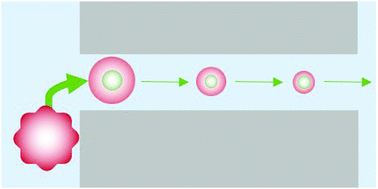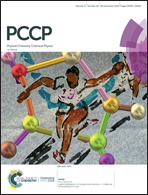The in situ electrochemical detection of microbubble oscillations during motion through a channel†
Abstract
Bubble oscillation has many applications, from driving local fluid motion to cleaning. However, in order to exploit their action, a full understanding of this motion, particularly in confined spaces (such as crevices etc. which are important in ultrasonic decontamination) is important. To this end, here we show how a Coulter counter can be used to characterize microbubbles produced through the ultrasonication of electrolytes. These microbubbles are shown to exist in relatively high concentrations while bubble activity is driven by ultrasound. Detection of these microbubbles, and their oscillatory behaviour, is achieved via translocation through a cylindrical glass microchannel (GMC). The microbubbles oscillate within the 40 μm channel employed and this behaviour is observed to change over the translocation period. This is attributed to the acoustic environment present or changes to the physical conditions in the interior of the chamber compared to the exterior. High-speed imaging confirms the presence of microbubbles as they move or ‘skate’ across the surface of the structures present before translocating through the channel. The observations are useful as they show that microbubble oscillation occurs within small structures, is preceded by surface confined bubbles and could be enhanced through pressure driven flow through a structure.



 Please wait while we load your content...
Please wait while we load your content...